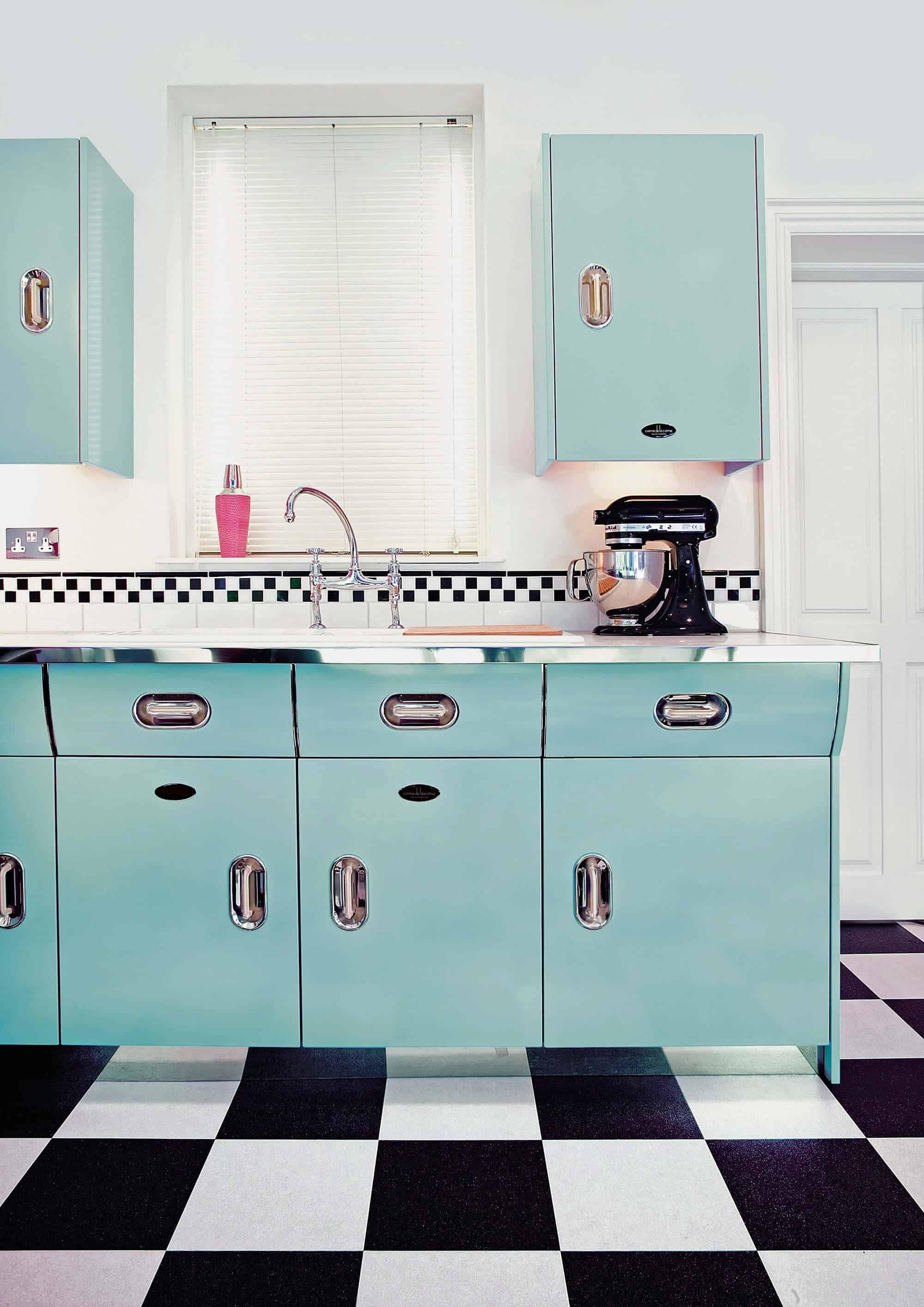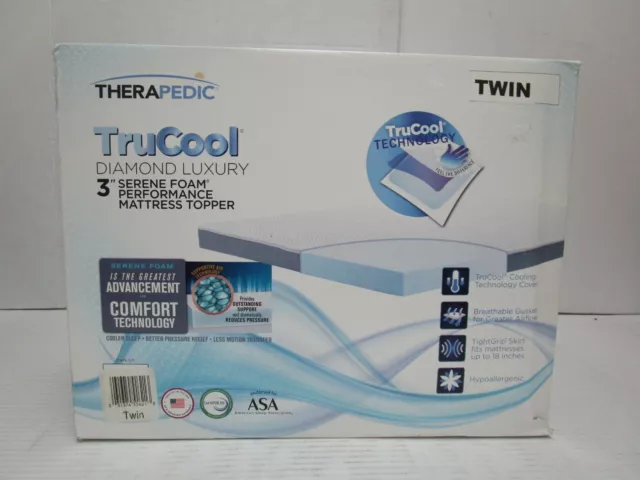When it comes to choosing the perfect kitchen sink for your home, there are many factors to consider. One of the most important decisions you'll need to make is whether to go with a 60/40 or 50/50 kitchen sink. Both options offer unique benefits and drawbacks, and it's important to weigh them carefully before making your final decision. In this article, we'll take a closer look at the differences between these two popular kitchen sink options to help you determine which one is right for you. 60/40 vs 50/50: Which Kitchen Sink is Right for You?
A 60/40 kitchen sink, also known as a double offset sink, features two basins with one basin being larger than the other. This design allows for more versatility and functionality, as the larger basin can be used for washing dishes and the smaller basin can be used for food prep or as a dedicated hand-washing station. One of the main advantages of a 60/40 sink is its size and capacity. The larger basin is typically around 60% of the sink's total size, making it perfect for washing larger pots and pans. The smaller basin, on the other hand, is around 40% of the sink's size, making it ideal for everyday tasks like washing fruits and vegetables. This can be especially beneficial for larger families or those who frequently cook and entertain. On the downside, the uneven size of a 60/40 sink may not be suitable for some homeowners. If you prefer a symmetrical look in your kitchen, a 60/40 sink may not fit your aesthetic. Additionally, the smaller basin may not be suitable for larger items like baking sheets or roasting pans. The Pros and Cons of a 60/40 Kitchen Sink
A 50/50 kitchen sink, also known as a double equal sink, features two basins that are equal in size. This design offers a more balanced and symmetrical look, making it a popular choice for modern and minimalist kitchens. One of the main advantages of a 50/50 sink is its versatility. Both basins are the same size, allowing for equal use of each basin for various tasks. This can be especially beneficial for those who need more counter space for food prep. Additionally, the equal size of the basins allows for easier installation and fitting of large items like baking sheets or roasting pans. However, the equal size of the basins may also be a disadvantage for some homeowners. If you frequently wash larger items, the limited space in both basins may be a hindrance. Additionally, the smaller size of each basin may not be ideal for those who regularly wash larger pots and pans. The Benefits of a 50/50 Kitchen Sink
When it comes to size and capacity, there are noticeable differences between a 60/40 and 50/50 kitchen sink. As mentioned earlier, a 60/40 sink has one basin that is larger than the other, typically around 60% and 40% of the sink's total size, respectively. This allows for more versatility in terms of the types of items that can be washed in each basin. On the other hand, a 50/50 sink has two basins that are equal in size, typically around 50% each. This design may not be as versatile as a 60/40 sink, but it offers a more symmetrical and balanced look in the kitchen. When it comes to capacity, both types of sinks offer similar capabilities. However, a 60/40 sink may have a slight advantage due to its larger basin, allowing for easier washing of larger items. Comparing the Size and Capacity of 60/40 and 50/50 Kitchen Sinks
In terms of design and functionality, both 60/40 and 50/50 kitchen sinks offer unique benefits. A 60/40 sink is ideal for those who need more versatility in their kitchen, as the larger basin can be used for various tasks while the smaller basin can be used as a dedicated hand-washing station. On the other hand, a 50/50 sink is perfect for those who prefer a more balanced and symmetrical look in their kitchen. This design is also great for those who need more counter space for food prep, as both basins are equal in size and can be used interchangeably. The Design and Functionality of 60/40 vs 50/50 Kitchen Sinks
When it comes to kitchen sinks, there are various materials to choose from, including stainless steel, composite, and porcelain. When deciding on a material for your 60/40 or 50/50 sink, it's important to consider factors like durability, maintenance, and aesthetics. Stainless steel is a popular choice for both types of sinks due to its durability and low maintenance. However, it may not offer as many color options as materials like composite or porcelain. Composite sinks, on the other hand, offer a wider range of colors and styles, but may be more prone to scratches and stains. Porcelain sinks are also a popular choice, but they require more maintenance and may be more prone to chipping. Choosing the Right Material for Your 60/40 or 50/50 Kitchen Sink
Proper maintenance and cleaning are essential for keeping your kitchen sink in top condition. For both 60/40 and 50/50 sinks, it's important to regularly clean them with a mild soap and water solution. Avoid using harsh chemicals or abrasive cleaners, as they can damage the sink's surface. Additionally, be sure to rinse and dry the sink thoroughly after each use to prevent water spots and mineral deposits. For stainless steel sinks, a soft cloth or sponge is recommended to prevent scratches. For composite or porcelain sinks, a non-abrasive cleaner and soft brush can be used to remove stains and debris. Maintenance and Cleaning Tips for 60/40 and 50/50 Kitchen Sinks
When it comes to cost, 60/40 sinks may be slightly more expensive than 50/50 sinks due to their larger size and capacity. However, the difference in cost may vary depending on the material and brand of the sink. It's important to consider your budget and needs when making your decision, as both types of sinks can range in price. The Cost Difference Between 60/40 and 50/50 Kitchen Sinks
Installing a kitchen sink can be a daunting task, but with the right tools and instructions, it can be a relatively simple process. For both 60/40 and 50/50 sinks, the installation process involves cutting a hole in the countertop and securing the sink in place with mounting brackets and sealant. It's important to follow the manufacturer's instructions and consult a professional if necessary to ensure proper installation. How to Install a 60/40 or 50/50 Kitchen Sink
Before making your final decision, it's always helpful to read customer reviews of different kitchen sinks. This can give you insight into the durability, functionality, and overall satisfaction of other homeowners who have purchased and used these sinks. Be sure to read reviews from multiple sources to get a well-rounded understanding. In conclusion, both 60/40 and 50/50 kitchen sinks offer unique benefits and drawbacks. It's important to consider your needs, budget, and aesthetic preferences when making your decision. By weighing the pros and cons and doing proper research, you can find the perfect kitchen sink for your home. Customer Reviews: 60/40 vs 50/50 Kitchen Sinks
The Great Debate: Kitchen Sink 60/40 vs 50/50

The Importance of Choosing the Right Kitchen Sink
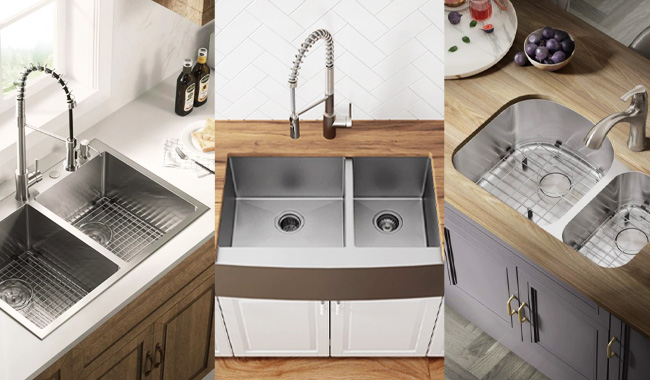 When designing your dream home, every detail matters. From paint colors to flooring materials, each decision contributes to the overall aesthetic and functionality of your space. One element that often gets overlooked is the kitchen sink. However, the sink is an essential part of any kitchen and can greatly impact your daily life. That's why it's crucial to carefully consider the options available and choose the right one for your needs. In this article, we will be diving into the debate between two popular kitchen sink options: 60/40 vs 50/50.
When designing your dream home, every detail matters. From paint colors to flooring materials, each decision contributes to the overall aesthetic and functionality of your space. One element that often gets overlooked is the kitchen sink. However, the sink is an essential part of any kitchen and can greatly impact your daily life. That's why it's crucial to carefully consider the options available and choose the right one for your needs. In this article, we will be diving into the debate between two popular kitchen sink options: 60/40 vs 50/50.
The Basics: Understanding 60/40 and 50/50 Sinks
 Before we delve into the differences between 60/40 and 50/50 sinks, let's first understand what these numbers refer to. These numbers represent the ratio of the sink's two bowls. In a 60/40 sink, one bowl is larger and takes up 60% of the sink's space, while the smaller bowl takes up the remaining 40%. In a 50/50 sink, both bowls are equal in size, taking up 50% of the sink each. Now, let's explore the pros and cons of each option.
Before we delve into the differences between 60/40 and 50/50 sinks, let's first understand what these numbers refer to. These numbers represent the ratio of the sink's two bowls. In a 60/40 sink, one bowl is larger and takes up 60% of the sink's space, while the smaller bowl takes up the remaining 40%. In a 50/50 sink, both bowls are equal in size, taking up 50% of the sink each. Now, let's explore the pros and cons of each option.
The Pros and Cons of 60/40 Sinks
 Pros:
The larger bowl in a 60/40 sink allows for more space to wash larger dishes and pots. This can be especially beneficial for those who cook and entertain frequently. The smaller bowl can be used for tasks like rinsing vegetables or washing smaller dishes, making it a versatile option.
Cons:
The smaller bowl in a 60/40 sink may be too small for larger items, making it more challenging to clean. Additionally, the size difference between the two bowls may not be significant enough to make a noticeable difference in functionality.
Pros:
The larger bowl in a 60/40 sink allows for more space to wash larger dishes and pots. This can be especially beneficial for those who cook and entertain frequently. The smaller bowl can be used for tasks like rinsing vegetables or washing smaller dishes, making it a versatile option.
Cons:
The smaller bowl in a 60/40 sink may be too small for larger items, making it more challenging to clean. Additionally, the size difference between the two bowls may not be significant enough to make a noticeable difference in functionality.
The Pros and Cons of 50/50 Sinks
 Pros:
The equal-sized bowls in a 50/50 sink offer balance and symmetry, making it an aesthetically pleasing option. The equal size also allows for flexibility in using the sink, as both bowls can accommodate a variety of dish sizes.
Cons:
One of the main drawbacks of a 50/50 sink is the limited space for larger items, as both bowls are the same size. This may be a challenge for those who frequently cook and need to wash larger pots and dishes.
Pros:
The equal-sized bowls in a 50/50 sink offer balance and symmetry, making it an aesthetically pleasing option. The equal size also allows for flexibility in using the sink, as both bowls can accommodate a variety of dish sizes.
Cons:
One of the main drawbacks of a 50/50 sink is the limited space for larger items, as both bowls are the same size. This may be a challenge for those who frequently cook and need to wash larger pots and dishes.
Which Sink is Right for You?
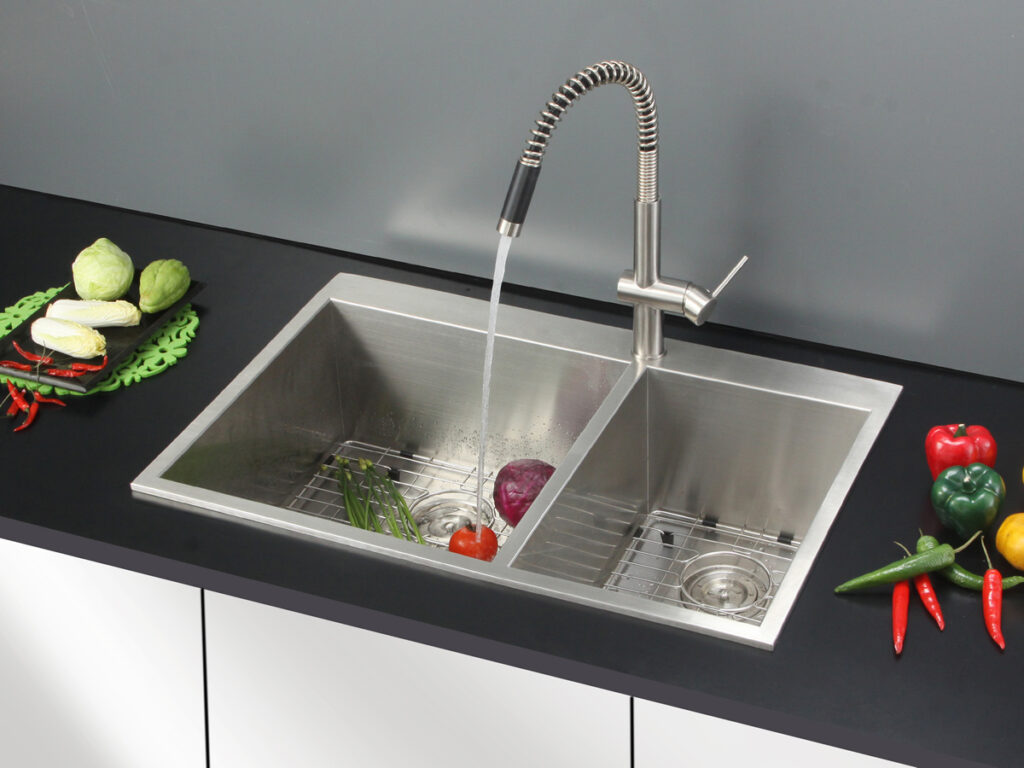 When it comes down to choosing between a 60/40 or 50/50 sink, it ultimately depends on your personal preferences and needs. If you cook and entertain frequently, a 60/40 sink may be the better option for its larger bowl. If you prioritize symmetry and versatility, a 50/50 sink may be the way to go.
No matter which sink you choose, it's essential to consider not only its functionality but also its design and material. A high-quality sink can add value to your home and elevate the overall look of your kitchen. So take the time to research and choose wisely. After all, the kitchen sink is an essential part of your home and deserves just as much attention as any other design element.
When it comes down to choosing between a 60/40 or 50/50 sink, it ultimately depends on your personal preferences and needs. If you cook and entertain frequently, a 60/40 sink may be the better option for its larger bowl. If you prioritize symmetry and versatility, a 50/50 sink may be the way to go.
No matter which sink you choose, it's essential to consider not only its functionality but also its design and material. A high-quality sink can add value to your home and elevate the overall look of your kitchen. So take the time to research and choose wisely. After all, the kitchen sink is an essential part of your home and deserves just as much attention as any other design element.









:max_bytes(150000):strip_icc()/GettyImages-174841379-5a85d100ba61770036d9f06c.jpg)




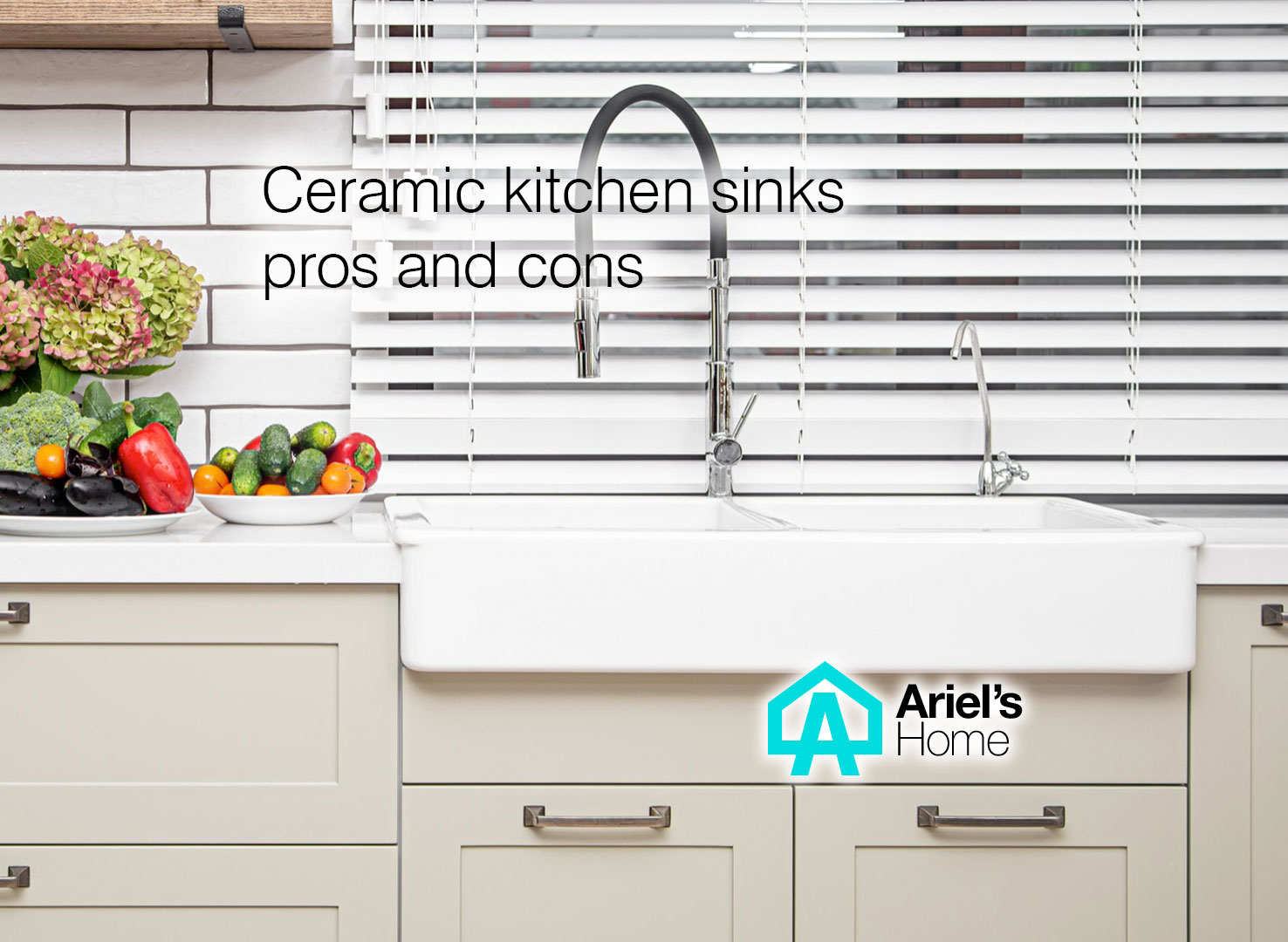
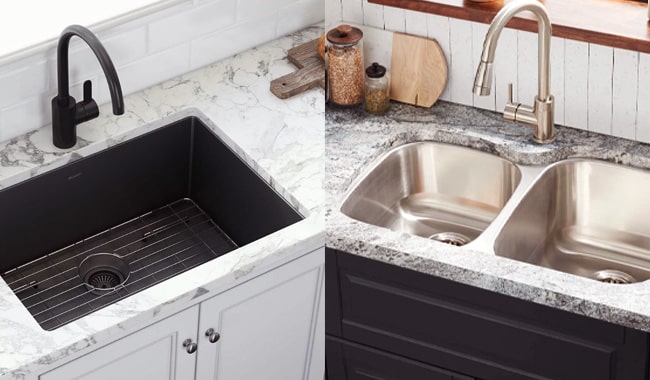






















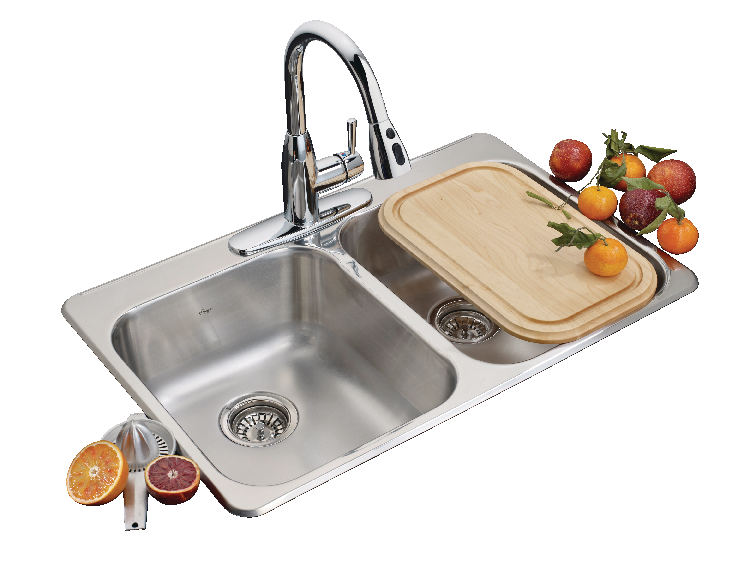


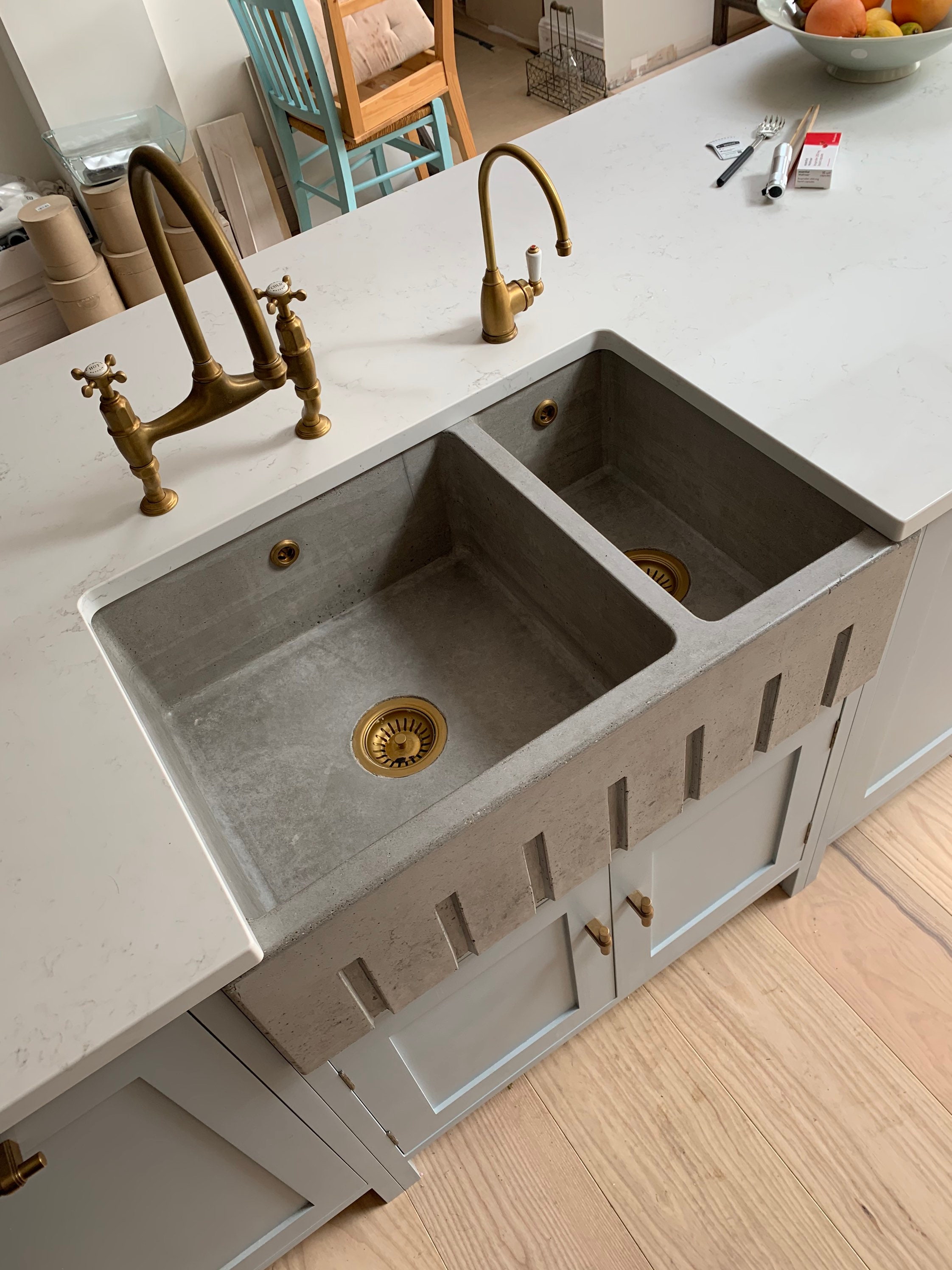

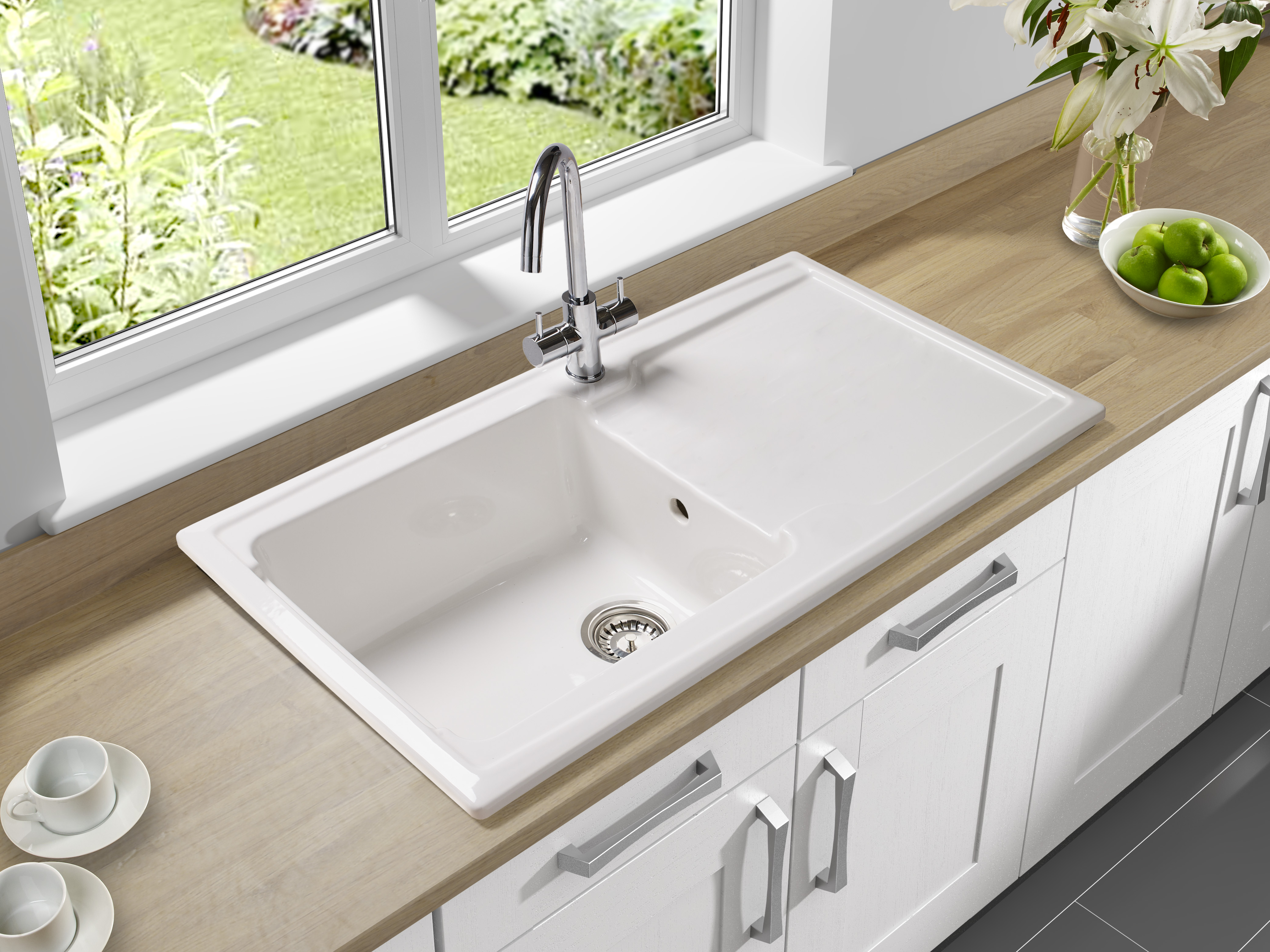















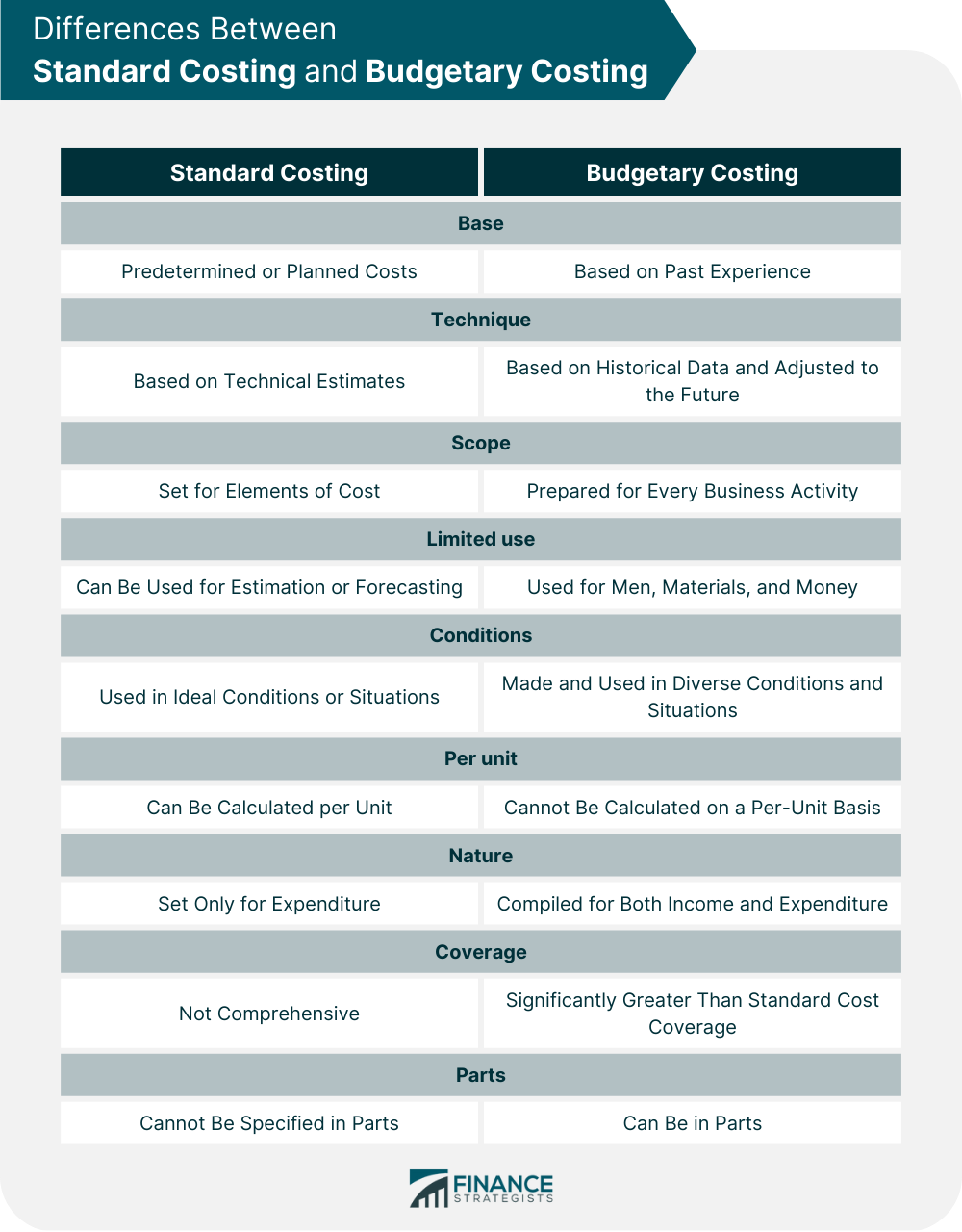









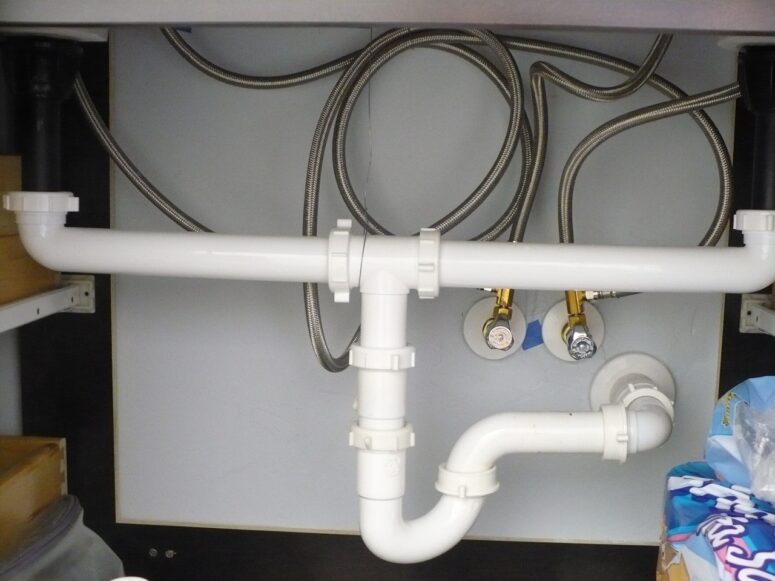

:no_upscale()/cdn.vox-cdn.com/uploads/chorus_asset/file/19495086/drain_0.jpg)


